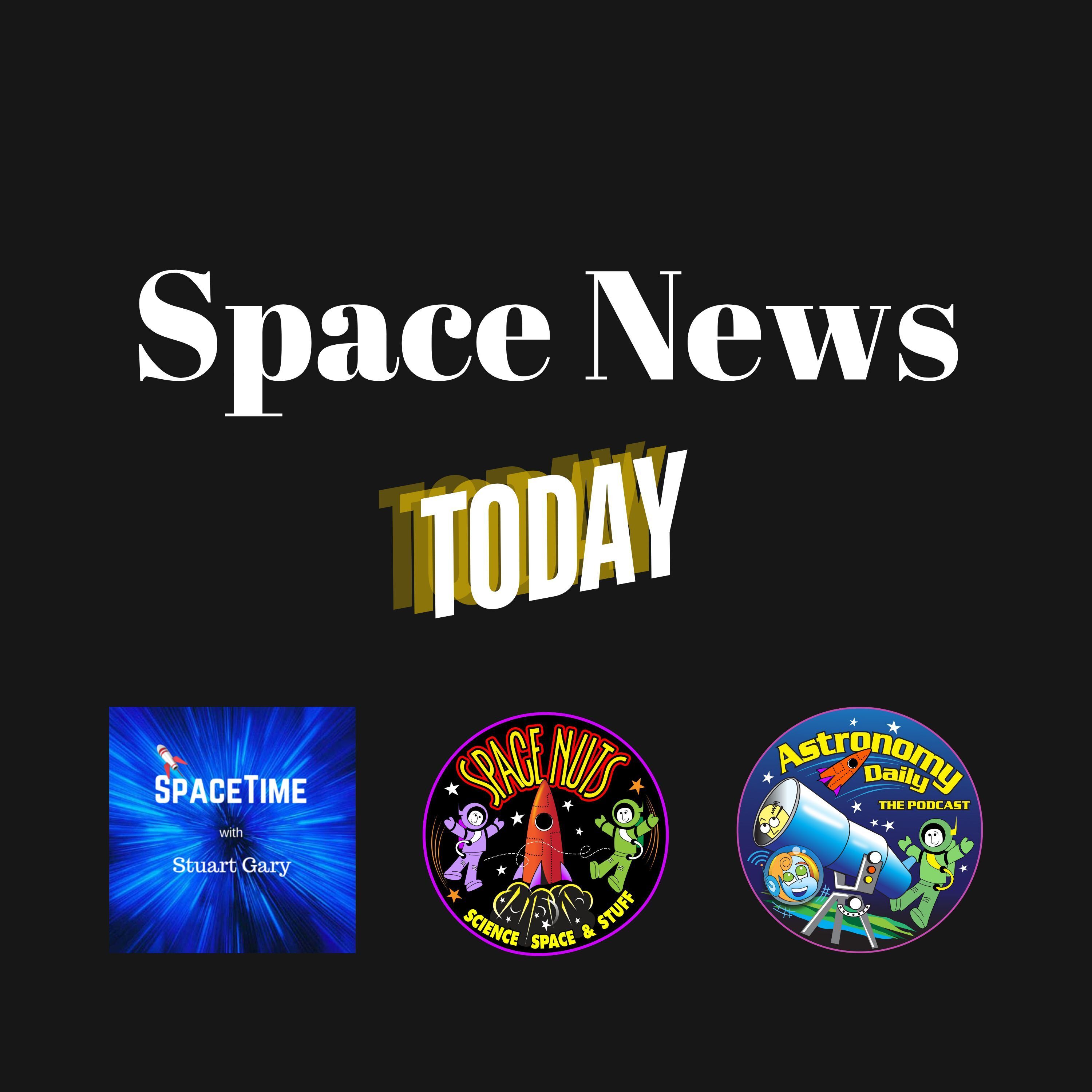Listen "Exploring Mars and Beyond: The Escapade Mission and the Expanding Mysteries of the Pleiades"
Episode Synopsis
(00:00:00) Exploring Mars and Beyond: The Escapade Mission and the Expanding Mysteries of the Pleiades
(00:00:43) NASA's ESCAPADE mission to Mars blasts off
(00:10:00) The Pleiades prove to be far bigger than thought
(00:14:05) Ending the debate over interstellar comet 3I-Atlas
(00:17:05) The Science Report
(00:19:39) Skeptics guide to talking to plants.
In this episode of SpaceTime , we explore the latest advancements in space exploration and cosmic discoveries that deepen our understanding of the universe.
NASA's Escapade Mission Launches to Mars
NASA has successfully launched its first dual satellite mission to Mars, the Escapade spacecraft, aboard Blue Origin's New Glenn rocket. This innovative mission aims to map the Martian magnetic field and atmosphere in three dimensions, providing crucial insights into how Mars lost its atmosphere and the conditions necessary for future human colonization. The twin probes, named Blue and Gold, will utilize a unique trajectory that allows for flexible launch windows, crucial for future resupply missions to Mars.
The Pleiades Star Cluster: A Greater Cosmic Structure
New research has revealed that the Pleiades star cluster is significantly larger than previously thought, forming the core of an expansive stellar complex that spans nearly 2,000 light years. This groundbreaking study combines data from multiple space missions, providing a clearer picture of the Pleiades' origins and its connection to other stellar groups, reshaping our understanding of star formation and migration across the galaxy.
Debate Over Interstellar Comet 3I Atlas Continues
The ongoing debate regarding the origins of interstellar comet 3I Atlas is addressed, as evidence increasingly supports its classification as a comet rather than an alien spacecraft. This segment explores the comet's characteristics, trajectory, and the scientific explanations behind its unusual features, reaffirming its status as a natural celestial object.
www.spacetimewithstuartgary.com (https://www.spacetimewithstuartgary.com/)
✍️ Episode References
Astrophysical Journal
NASA Reports
University of California Research
Become a supporter of this podcast: https://www.spreaker.com/podcast/spacetime-your-guide-to-space-astronomy--2458531/support (https://www.spreaker.com/podcast/spacetime-your-guide-to-space-astronomy--2458531/support?utm_source=rss&utm_medium=rss&utm_campaign=rss) .
Episode link: https://play.headliner.app/episode/30251205?utm_source=youtube
(00:00:43) NASA's ESCAPADE mission to Mars blasts off
(00:10:00) The Pleiades prove to be far bigger than thought
(00:14:05) Ending the debate over interstellar comet 3I-Atlas
(00:17:05) The Science Report
(00:19:39) Skeptics guide to talking to plants.
In this episode of SpaceTime , we explore the latest advancements in space exploration and cosmic discoveries that deepen our understanding of the universe.
NASA's Escapade Mission Launches to Mars
NASA has successfully launched its first dual satellite mission to Mars, the Escapade spacecraft, aboard Blue Origin's New Glenn rocket. This innovative mission aims to map the Martian magnetic field and atmosphere in three dimensions, providing crucial insights into how Mars lost its atmosphere and the conditions necessary for future human colonization. The twin probes, named Blue and Gold, will utilize a unique trajectory that allows for flexible launch windows, crucial for future resupply missions to Mars.
The Pleiades Star Cluster: A Greater Cosmic Structure
New research has revealed that the Pleiades star cluster is significantly larger than previously thought, forming the core of an expansive stellar complex that spans nearly 2,000 light years. This groundbreaking study combines data from multiple space missions, providing a clearer picture of the Pleiades' origins and its connection to other stellar groups, reshaping our understanding of star formation and migration across the galaxy.
Debate Over Interstellar Comet 3I Atlas Continues
The ongoing debate regarding the origins of interstellar comet 3I Atlas is addressed, as evidence increasingly supports its classification as a comet rather than an alien spacecraft. This segment explores the comet's characteristics, trajectory, and the scientific explanations behind its unusual features, reaffirming its status as a natural celestial object.
www.spacetimewithstuartgary.com (https://www.spacetimewithstuartgary.com/)
✍️ Episode References
Astrophysical Journal
NASA Reports
University of California Research
Become a supporter of this podcast: https://www.spreaker.com/podcast/spacetime-your-guide-to-space-astronomy--2458531/support (https://www.spreaker.com/podcast/spacetime-your-guide-to-space-astronomy--2458531/support?utm_source=rss&utm_medium=rss&utm_campaign=rss) .
Episode link: https://play.headliner.app/episode/30251205?utm_source=youtube
More episodes of the podcast Space News Today
Meteor Showers, Mars Missions & the Mystery of Stranded Astronauts | Space Nuts: Astronomy...
21/11/2025
Ancient Rocks and Cosmic Forces: Exploring Earth’s Origins and the Hunt for a Fifth Force
20/11/2025
 ZARZA We are Zarza, the prestigious firm behind major projects in information technology.
ZARZA We are Zarza, the prestigious firm behind major projects in information technology.
